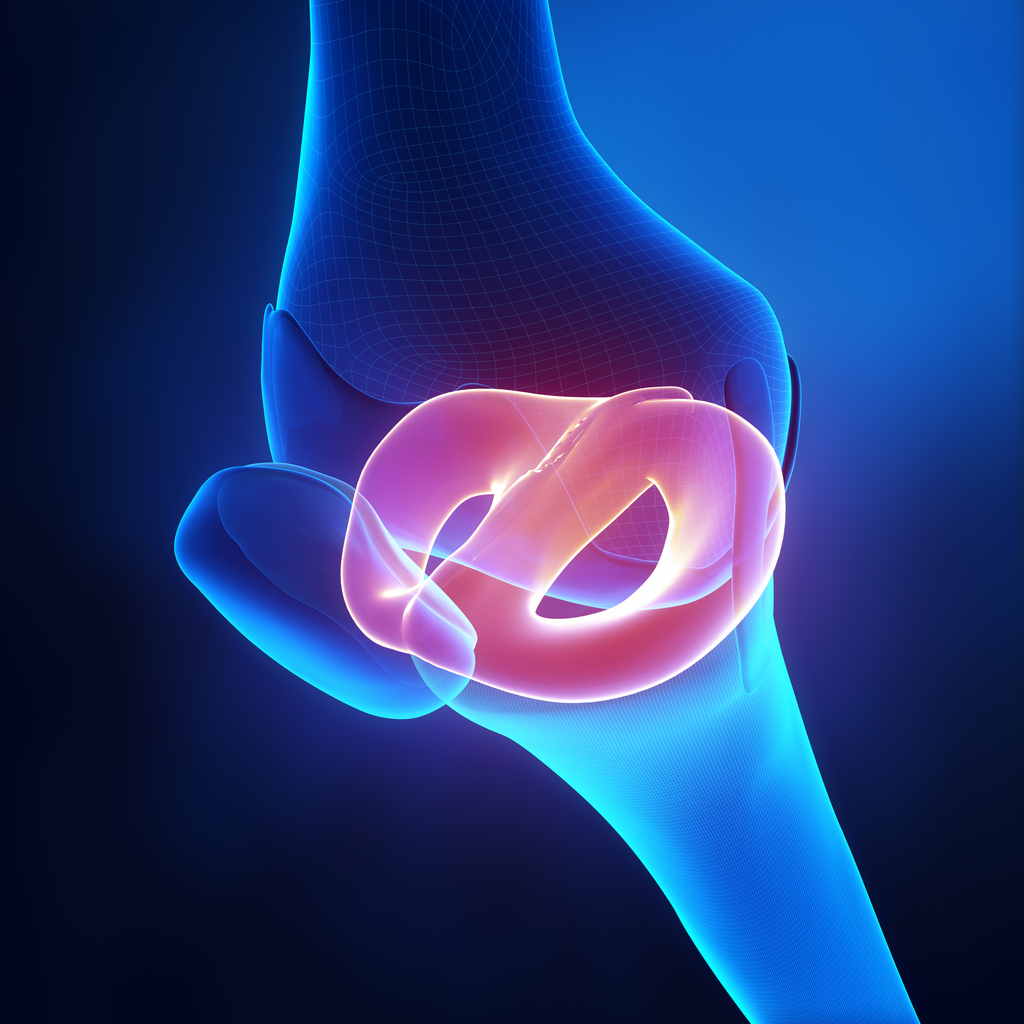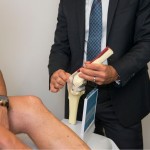
Our knee joint is made up of three bones that meet together. These are the thighbone or “femur”, the shinbone or “tibia” and the kneecap or “patella”.
Between the thighbone and the shinbone there are two wedge-shaped cartilages “the meniscus”. Each knee has two “menisci”. They are very tough, smooth and rubbery and their cushioning of the joint keeps it stable. The meniscus is often thought of as being shock absorbers between the thighbone and the shinbone.
They work to help in the reduction of wear and tear on the knee’s cartilage and bones and assist in guiding movement.
Unlike our skin, the meniscus most of the time doesn’t heal or regenerate when it is cut and is susceptible to becoming weakened from repetitive stress. This will result in a meniscus tear which is one of the most common of knee injuries.
What is a meniscus tear?
There are different types of meniscus tears, some common meniscus tears include:
- Bucket handle tear – named because of its appearance. As the torn section of the meniscus forms a “handle” shaped segment of damaged tissue. Due to the displacing of the meniscus cartilage into the notch of the knee joint, a bucket handle tear prevents the knee from fully straightening.
- Parrot beak tear – again name because of its appearance
- Flap tear
- Radial tear
What causes a meniscus tear?
There are two main causes.
The ageing process:
As we age our cartilage wears thin and weakens and our meniscus may start to degenerate and become more prone to tears. Tissue that is aged and worn is more prone to tears and something as simple as standing up from a sitting position and twisting awkwardly may result in a tear. As golfers and tennis players age they become more prone to meniscus tears due to the twisting motion needed in these sports.
Trauma generally associated through sports injury:
Sudden traumatic meniscus tears often occur during sports. Common causes are when players squat and then twist the knee as seen in our footballers.
Sport related tears of the meniscus commonly occur together with other injuries such as anterior cruciate ligament (ACL) tears.
What are the signs and symptoms of meniscus tear?
Sometimes you may feel a “pop” when you have torn your meniscus. After a tear, the majority of people are still able to walk on their knee and many athletes have been known to continue playing with a tear.
But over 2 to 3 days the knee will develop stiffness and become swollen.
These are the most common symptoms of a meniscus tear
- Pain in the knee
- Stiffness and swelling
- Catching or a feeling of locking of your knee
- The sensation that your knee is about to give way
- Restrictions on full range of motion of your knee
It is important to seek treatment when you have a meniscus tear – without it, a piece of the meniscus may separate and move into the joint which can cause your knee to slip, lock or pop.
How is a meniscus tear treated?
Treatment will vary dependent upon the type, location and size of the tear.
Non-surgical treatment
If the tear is small and at the meniscus’ outer edge it may respond to non-surgical treatments. These include:
The RICE method; a recognised effective protocol for many sports injuries.
RICE
- Take a break from the activity that caused the injury. We may recommend that you use crutches to avoid weight bearing on the knee.
- Use cold packs for 20 minutes at a time, several times a day.
- Wear an elastic compression bandage – this will assist in preventing additional swelling and blood loss
- This reduces swelling. When you rest, recline and raise your leg up higher than your heart.
Non-steroidal anti-inflammatory medicines.
This includes drugs like aspirin and ibuprofen which will the reduce pain and swelling in your knee.
Surgical Treatment
If you are not responding to non-surgical treatment and your symptoms persist, we may recommend arthroscopic surgery. Knee arthroscopy is now one of the most commonly performed and successful surgical procedures. We make a small incision in the knee and insert a miniature camera. This enables us to have a clear view inside of your knee and to use specially designed instruments to trim or repair the meniscus tear.
Meniscus repair. Some meniscus tears can be repaired by suturing (stitching) the torn pieces together. Whether a tear can be successfully treated with repair depends upon the type of tear, together with the injured meniscus’ overall condition. As the two menisci need to heal back together, the recovery time is longer.
What rehabilitation is needed after surgery?
Post-surgery, we may need to stop your knee from moving into certain positions if you have had a repair and will put you in a brace. If you have not had a repair early active movement is indicated. Weight bearing is generally permitted straight away.
Physiotherapy and a regular exercise program is prescribed early on as part of the rehabilitation. This will ensure we restore mobility and strength to your knee.
You will be able to carry out a lot of your rehabilitation at home as you overcome the acute post –operative period.
What is the rehabilitation and repair time for a meniscus repair?
Typically, the rehabilitation time for a meniscus repair is around 3-6 months, while a “meniscectomy” procedure requires less time to return to normal function — approximately 4 to 6 weeks.
Dr Shidiak’s experience with the non-surgical and surgical treatment of meniscus repairs
As an orthopaedic surgeon working with elite athletes, one of the most common conditions I treat is injuries of the meniscus. We have had great success in both non-surgical and surgical treatments. The key is to not ignore your injury but to take action before greater damage occurs to your joint.


